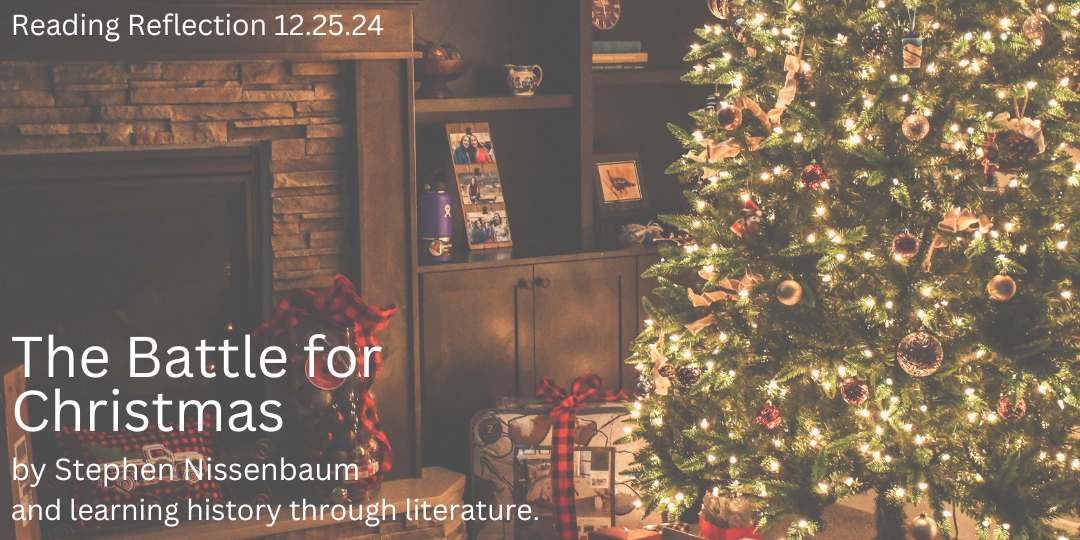Today is Christmas, and I haven’t read too much the last few days. Over the last couple of weeks, however, I’ve been working my way through The Battle for Christmas by Stephen Nissenbaum. I’m probably ⅔ of the way through it, slow by my standards, but it’s been a crazy festivity season. A couple thoughts as of today.
I just read the sections on trees and presents, and noticed that a lot of the sources Nissenbaum cites are from contemporary literature in the 19th century. My Modern Latin American professor, Pablo Martínez (NMSU, UTEP) pointed out to us in class that if we really wanted to understand the way things were during any given era, whenever possible we should read the literature written at the time. He was reading War and Peace, something I haven’t yet had the courage to take on (it’s so long, and so heavy!), but he did inspire me to finally read Crime and Punishment. Anyway, regarding Christmas, Nissenbaum notes that there was a change in the literature around the 1830s (p. 176): literature before the that decade dealt with social disorder, but after dealt with greed and commercialism, especially in regard to children.
One larger theme of the book is that Christmas celebrations in America began by reversing the social classes, most notably by the wassailers and Carnival-esque callithumpians, in which the upper class had to, for a season, comply with the wishes of the lower classes (sometimes under threat of violence). The coming of Santa, and what we think of as current commercial traditions of Christmas was an attempt to do the same, but instead of making that reversal class based, the tradition made it generation based. A Visit from Saint Nick and writings in Washington Irving’s Sketchbook are used to show this transition. Worth another look, maybe. By shifting the seasonal reversal from the poor to the children, the upper class (of which Clement Clark Moore and Irving belonged) could shift the financial aspect to the family instead of society at large. This is also what Nissenbaum calls the invention of children, who, before, had been simply seen as small dependent members of the family and society.
When he gets to trees and presents, he again talks about literature. One 1836 book is meant to make children expect little, and feel guilty for desiring or expecting presents. An 1844 editorial by Margaret Fuller expressed a different opinion, but also stuck with the theme. She said the tree and seasonal hullabaloo was worth it to make the children happy, but also that children (and adults) should be taught, through Christmas, to give. (216-17).
In the meantime, outside the family home, some were still behaving badly, drinking and shooting off guns, like earlier wassailers, in particular “boys.” A New York tribune editorial writer blamed on the parents of said boys. The point he makes here is that in this case, the failing of a certain class was being blamed on the action of a generation. The class misbehaving out in the world, but the parents being blamed within the home. Again we see both the inversion of authority, and the transfer from social class to age.
More to come on The Battle for Christmas, or at least the second half of it. I didn’t start writing daily reflections until I was midway though.
Merry Festive Season! And thank you for reading!
#19thcentury #Christmas #socialclasses #CommercializedChristmas
You can support my work by Buying Me a Coffee, or purchasing from my Kindle Wish List. Thanks! I appreciate you!
